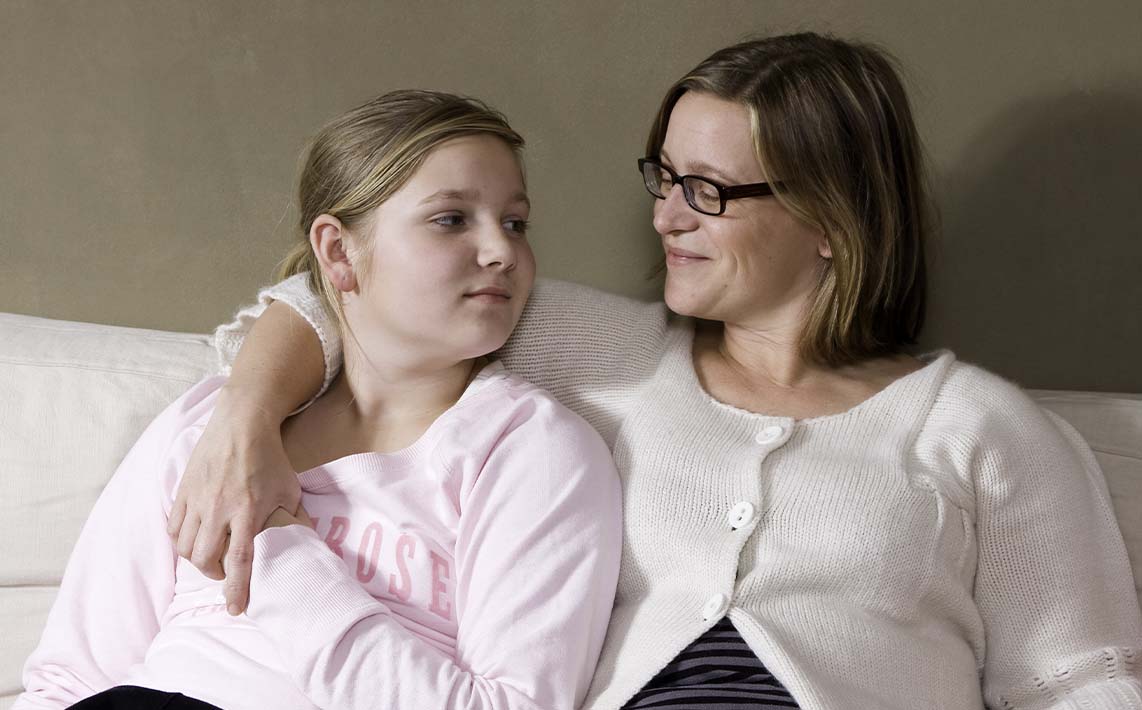
Relationship Skills
Family Resources on Relationships: Talk to Your Folks
Project and Purpose
In groups, students analyze portions of an article and demonstrate using frameworks for talking with parents and adults.
Essential Questions
What are some strategies for having meaningful conversations with parents and adults?

If this lesson was used in the classroom: Students learned about having conversations with their parents or guardians. In class students used portions of an article about talking to parents to identify ways to have conversations with parents. In small groups students developed skits to provide examples of how to have conversations with their parents.
Getting Ready for the Conversation
As adolescents grow developing their own social networks outside of their families and the social networks of the adults in their households. Despite this, parents and adult mentors are still extremely important in the lives of adolescents (although adolescents do not always want to admit this). This lesson provides some techniques and ideas to students on how they can continue to have meaningful conversations with their parents and other adults in the household.
Conversation notes:
As students grow and relationships change with parents and other adults meaning that many adolescents need to be taught how to have more mature conversations.
The article students used in class by Dr. D’Arcy Lyness at the Kids Health website:
https://kidshealth.org/en/kids/talk-parents.html
Constructive Conversation Starters
The first item is for follow-up after participating in class activities.
What happened in the skit your group wrote in class? What were some other interesting things that came up in other skits? Why were the things you mentioned interesting?
Do you find it easy to talk with us or other adults? Why or why not (use examples)?
What are some things that we should do to make sure we are talking often? Why will this help keep communicating?
School to Home Resources on Relationships: Talk to Your Folks
Materials
- Copies of six article portions, one portion per group
- Copies of “The Thing Is…” worksheet, one per student
Lesson Plan
Teacher
1. Explain to the class that they are going to become experts in how to talk to parents. They will work in groups to read and analyze a portion of an article, each of which has a set of questions and tasks. The groups will do the following with each article portion:
- Identify 2-3 points from the article that every teen should be aware of. Think of these as the most important takeaways.
- Prepare a skit or scenario to demonstrate a best practice of each of the 2-3 points. Note that several portions of the article provide examples of things to say; groups must create original examples. This might be as short as one line spoken by a character to an invisible adult, or it might be a minute long skit between a young person and an adult.
- Be prepared to answer any questions from the observers.
2. Break the class into six groups and give each group one of the portions of the article and have them begin work on completing the tasks.
3. Give the groups time to work on their tasks. At the end of the allotted work time, establish a presentation area and review expectations for appropriate audience behavior.
4. Distribute the worksheet, “The Thing Is…” to each student and explain that they will watch each presentation and write what they consider the most important thing each group presents about what to remember when having a conversation with their parents.
Conclusion
Ask students to share their comments they wrote on “The Thing Is…” worksheet with a trusted partner. If possible, have them share with the full group. Teacher should determine whether or not to collect the worksheets.


